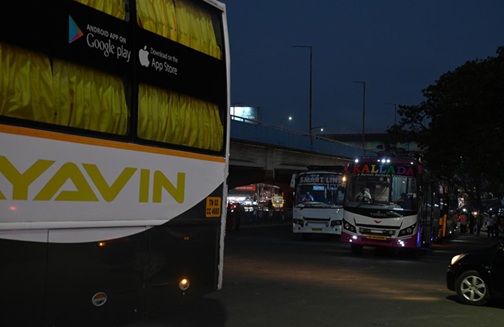(Preliminary Examination: Current Affairs)
(Mains Examination, General Studies Paper 2: Topics Related to the Development and Management of Social Sectors/Services Related to Health, Education, and Human Resources) |
Context
Recently, states such as Rajasthan (Jaisalmer-Jodhpur route), Uttar Pradesh, and Andhra Pradesh (Kurnool) have witnessed serious bus accidents and bus fires. Many people have been burned to death in these luxury sleeper buses. Such accidents highlight how unsafe sleeper buses are becoming for passengers.

Causes of Bus Accidents
- Unsafe Body Modifications: Most buses are based on engines and chassis from major brands, but the bodies are manufactured in local workshops where safety standards are ignored.
- Use of Flammable Materials: Cheap and highly flammable materials are used in curtains, beds, and interiors.
- Unsafe fuel tanks: Sometimes additional fuel tanks are fitted, increasing the risk of fire.
- Lack of emergency exits: Most sleeper buses lack four designated exits (two doors and two windows), making it difficult for passengers to exit.
- Untrained drivers: Drivers are not trained to protect passengers in an emergency.
What are Automotive Industry Standards (AIS)?
India's Ministry of Road Transport has formulated Automotive Industry Standards (AIS) aimed at ensuring the structural and fire safety of vehicles. Its main provisions are:
- Structural strength: The use of strong and certified materials in the construction of the bus body is mandatory.
- Fire safety: Fire alarms and fire detection systems are mandatory.
- Four emergency exits: Two main doors and two temporary windows are considered necessary.
- Crash test requirements: The entire structure of the bus must be tested to ensure passenger safety in the event of a collision.
- Use of fire-retardant materials: Curtains, seats, and sleeper materials must be fire-resistant.
However, these provisions are not actually followed by most bodybuilding workshops.
Suggestions to Prevent Accidents
- Strict adherence to AIS standards: The government should license all sleeper buses only if they comply with all AIS standards.
- Regular inspections: Technical and fire safety testing of buses should be made mandatory every six months.
- Driver training: Every driver should receive training on emergency management and passenger safety.
- Passenger information: Passengers should be informed about safety rules and exits on buses, just like on airplanes.
- Recertification of old buses: The operation of the existing sleeper bus fleet should be prohibited without re-testing and approval.
- Mandatory fire fighting equipment: Every bus must have a working fire detector and fire extinguisher.
Conclusion
Sleeper bus accidents are not simply the result of technical failures but a manifestation of systemic negligence. Only strict adherence to safety standards established by the Ministry of Road Transport and regular monitoring can prevent such accidents. Preventing sleeper buses from becoming "moving death traps" is now the joint responsibility of both the government and industry to ensure passenger safety.
|
Fourth Global Ministerial Conference on Road Safety

- Held: February 18-20, 2025, in Marrakesh, Morocco
- Objective: Assess progress towards the Sustainable Development Goal of halving road accident deaths by 2030
- Theme: Commitment to Life
- Hosted by: Government of Morocco and World Health Organization (WHO)
Background
- First conference: Held in Russia in 2009.
- United Nations Initiative: In 2010, the United Nations declared the decade 2011-2020 as the "Decade of Action for Road Safety."
- Second Conference: Held in Brazil in 2015.
- The Brasilia Declaration was signed at this conference to achieve Sustainable Development Goal (SDG) 3.6.
- Its aim is to halve road traffic deaths and injuries by 2030.
- Third Conference: Held in Stockholm, Sweden, on February 19-20, 2020
|



